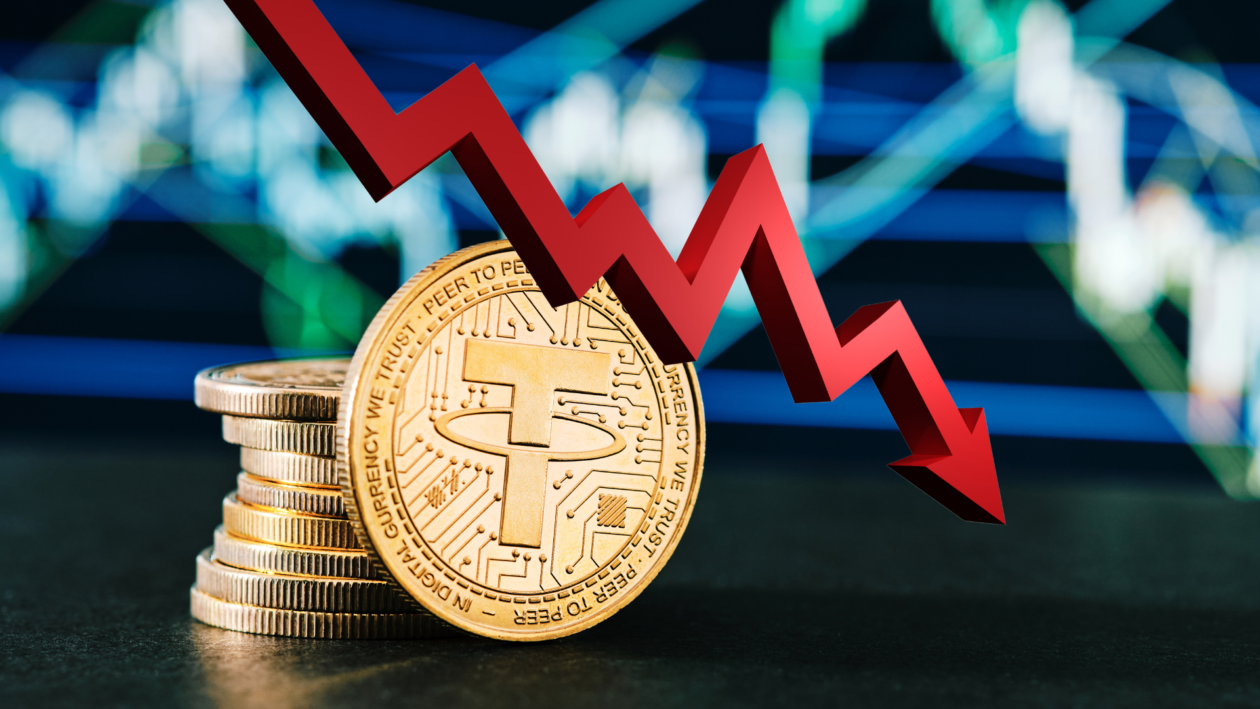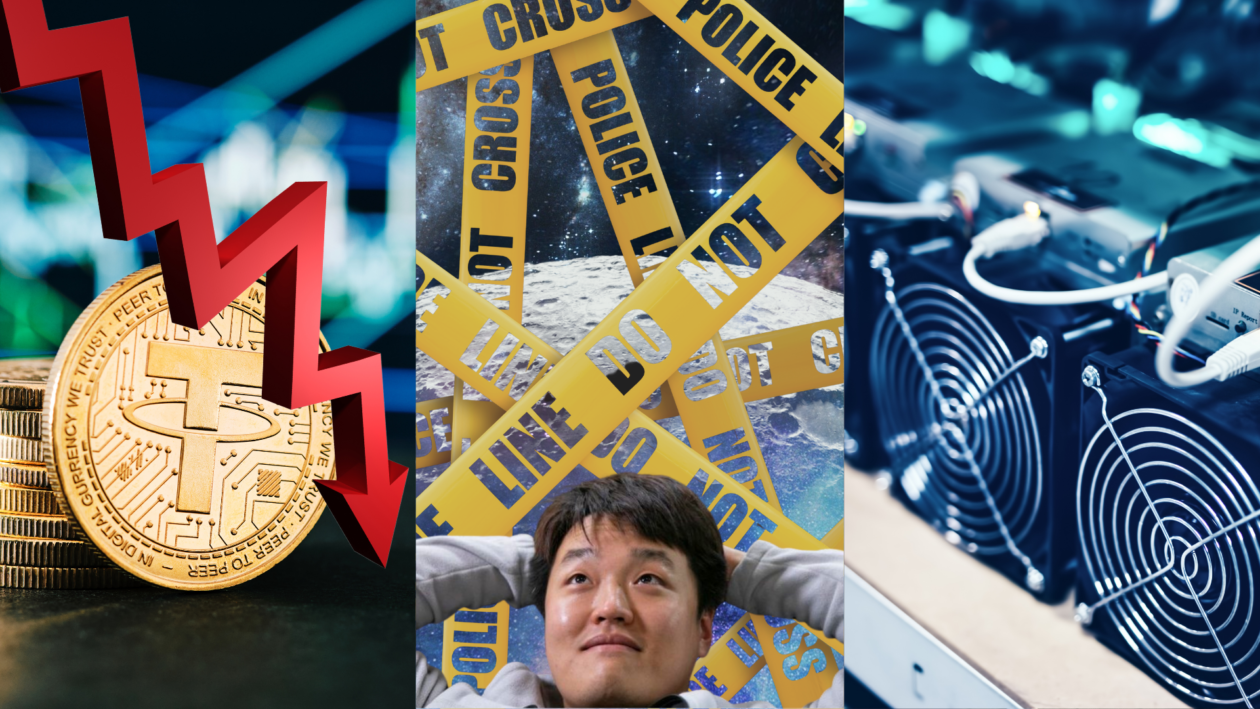In this issue
- Tether: US$11 billion unmoored
- Terra: Aftershocks
- China’s miners: Still striking gold
From the Editor’s Desk
Dear Reader,
Stablecoins have had a particularly bad rap recently, thanks in no small part to the meltdown of TerraUSD (UST).
For anyone thinking that stablecoins promised an impregnable haven from the notorious volatility of the broader crypto market, UST’s spectacular collapse has almost certainly erased any such notion. Since the birth of the stablecoin phenomenon, critics have mocked the use of the term “stable” in the context of fiat-pegged private digital currencies.
UST isn’t the first stablecoin to elicit such crowing among the detractors. Let’s not forget the tensions and fears over Tether, whose operator, Bitfinex, a year ago defended itself in a Word on the Block interview, despite the fact that its coin was somewhat short of complying with its much-touted status as backed one-to-one with U.S. dollars.
Tether has been among the many casualties of the stablecoin selloff amid the still-unfolding UST disaster. Yet if we remember Tether’s troubles — which have included a costly settlement with the State of New York after an almost two-year investigation, a ban on doing business there, and, more recently, concerns over its shrinking cash reserves — we also have to give it credit for having weathered those storms and the current one, maintaining its value with only a few wobbles along the way.
Despite the US$11 billion slump in Tether’s market cap we’ve seen in recent days — a huge sum, by any measure — the coin still has an exchange value of US$1. One has to look back almost five years to see it dropping more than 4.9% against the greenback. Indeed, just a couple of weeks before that slippage, it was trading above US$1.30.
So, what to make of the current mess in the stablecoin market? There’s no denying that stablecoins have suffered severe reputational damage as a result of the Terra debacle. But we could do worse than take a leaf out of the book of Austrian political economist Joseph Schumpeter, who is perhaps best known for his theory of “creative destruction.” Terra’s spectacular fall may well prove to have been one of those Schumpeterian destructive moments that spurs a new burst of creation.
In that spirit, if the growing impetus for regulation of stablecoins suggested by authorities such as U.S. Treasury Secretary Janet Yellen gains traction, the chorus of critics may find fewer opportunities to make a mockery of stablecoin’s name.
Until the next time,
Angie Lau,
Founder and Editor-in-Chief
Forkast
1. Tether on the ropes?

By the numbers: Tether — over 5,000% increase in Google search volume.
Following the collapse of algorithmic stablecoin TerraUSD (UST), the durability of the stablecoin sector overall is coming into question. Tether (USDT), the largest stablecoin and the third-biggest cryptocurrency in the world, has lost US$10.9 billion of its market capitalization in the past 14 days.
- USDT had a market cap of US$73.3 billion at press time, down from an all-time high of US$84.2 billion on May 11, according to data from CoinGecko.
- A collateral-backed stablecoin, USDT can be traded for U.S. dollars at a 1:1 ratio. Amid a market-wide panic after Terra UST’s collapse, however, USDT briefly lost its peg to the greenback on May 12, and its price fell to around US$0.97. A sell-off ensued that saw the coin’s market cap take a pounding.
- Each USDT in circulation is supported by cash, cash equivalents and other assets owned by Tether in order to retain its one-to-one peg with the U.S. dollar. By contrast, algorithmic stablecoins such as UST base their dollar peg on calculation and incentive mechanisms. Tether originally claimed that USDT was fully backed by U.S. dollars — a claim that was exposed as false by the New York Attorney General in February 2021 and again found to be the case by a Bloomberg investigation in October 2021 — which gave rise to concerns over the stability and transparency of stablecoins in general.
- When USDT slipped off its dollar peg on May 12, Tether offered reassurances that it would honor all redemptions by its users, and five days later said it had redeemed more US$7 billion of USDT within 48 hours.
- The recent turmoil in the crypto market has drawn significant attention from regulators. A statement by the G7 group of advanced economies on May 20 urged that crypto-assets, including stablecoins, be held to the same standards as the rest of the financial system, and called for more robust disclosures of information relating to the reserve assets backing stablecoins.
Forkast.Insights | What does it mean?
Tether’s position as the world’s biggest and most established stablecoin should have been a bulwark against investor jitters. Although USDT remains the world’s most traded cryptocurrency, its future is perhaps not as secure as has been widely assumed amid investors’ doubts over the scale and nature of Tether’s reserves.
Tether is supposed to have U.S dollar-value equivalents for every stablecoin it mints, and it had claimed to hold reserves of greenbacks that matched the number of USDT in circulation. It came to light last year that much of that backing comprised corporate bonds and assets other than actual U.S. dollars. It has been suggested that Tether’s management team may have even used USDT’s reserves to trade on equity markets. During the crypto boom that peaked last year, many were willing to turn a blind eye, but more recently, investor appetite for risk has dwindled, hence the selloff in USDT.
The dramatic collapse of Terra’s UST roiled the crypto industry, but a collapse of Tether would be catastrophic. USDT trading volumes dwarf those of every other crypto, including Bitcoin. On a typical day, over US$170 billion of USDT changes hands, more than twice as much as Bitcoin.
If Tether wants to remain an essential part of the crypto ecosystem, it ought to do more to demonstrate that it’s a responsible custodian of people’s cash. USD Coin, its main rival, has eaten into its market share over the past two years and is likely to surpass Tether at some point this year if it maintains growth at the same rate.
2. A Terra-ble stench worsens

By the numbers: Do Kwon — over 5,000% increase in Google search volume.
An employee of Terraform Labs, the South Korean company behind collapsed algorithmic stablecoin TerraUSD (UST), has been accused of embezzlement, according to police in Seoul.
- The Seoul Metropolitan Police Agency’s Cyber Crimes Investigations Unit revealed this week that it had received a report alleging that a Terraform Labs employee had engaged in embezzlement, although the report’s validity has yet to be verified.
- In a related investigation involving Terraform Labs, police have ordered local cryptocurrency exchanges to freeze funds held by the company’s Luna Foundation Guard (LFG), according to Korean media reports, and police are hoping to identify and seize funds held illegally by Terraform Labs and LFG, which supports the Terra ecosystem.
- Terra’s UST collapse has drawn unprecedented attention from local police. On May 18, prosecutors reinstated the defunct Financial and Securities Crime Joint Investigation Team, a specialized unit charged with investigating high-profile financial and security crimes. The Terra case will be the first that the resurrected team will investigate, according to local media outlet SBS News.
- According to two South Korean legal documents, Terraform Lab co-founder Kwon Do-hyung — better known as Do Kwon — liquidated company offices in Busan and Seoul after a shareholder meeting on April 30, days before the crash of UST and sister coin LUNA, prompting speculation that he had anticipated the collapse. Do Kwon tweeted in response that the office closures had been “purely coincidental.”
- South Korea’s national tax office has reportedly ordered Terraform Labs, Do Kwon, and other Terraform executives to pay a 100 billion won (US$78 million) fine for alleged tax evasion, according to a local news report.
Forkast.Insights | What does it mean?
The mantra of Web 2.0 was Facebook co-founder Mark Zuckerberg’s internal company motto “Move fast and break things.” It may have seemed exhilarating at first, but the tech industry’s predilection for breaking things appears in many instances to have included breaking the law. Facebook, Uber and many others tech firms have been penalized by authorities the world over for running roughshod over privacy, labor and other laws. Crypto seems to be having a similar moment, and Terraform Labs is at the sharp end of an official counter-offensive.
As Do Kwon and his company are being investigated, regulators in the U.S., Europe and elsewhere are beginning to put pressure on crypto’s rapid expansion, with a view to curbing unfettered growth and protecting people from being taken to the cleaners in fiascos such as Terra UST’s collapse. This is long overdue.
In the U.S., crypto legislation remains patchy, and there has been little political appetite to bring the industry to heel. This dithering has allowed Americans to take part in Web 3.0’s rapid expansion but has also deprived them of any of the protections afforded to their dealings with businesses in the traditional finance sector.
It’s a tragedy that UST’s implosion has led to the loss of billions of dollars of people’s money, but if there is a silver lining, it’s that the whole escapade appears to have galvanized authorities to introduce coherent laws to stop another run on a stablecoin. It’s clearly too late for Terra and UST, but it’s good news for the industry.
3. Chinese miners go deep undercover

Eight months have elapsed since China imposed a blanket ban on crypto mining, yet crypto miners are still operating clandestinely — and even thriving — in the country, pushing China’s Bitcoin hashrate back near the top of the global rankings.
- In January — the same month that Chinese authorities declared crypto mining to be “obsolete” as an industry — Chinese miners had already bounced back to being 21.1% of the Bitcoin hashrate worldwide, making the nation the second-largest Bitcoin producer, trailing only the U.S.’s 37.8%. In 2019, China had the world’s biggest share of BTC hashrate, at 75%, before it briefly dropped to zero last year following a series of government crackdowns on crypto mining.
- Mark Zhou, chief executive of Chinese mining rig repair company Meta-Luban, told Forkast that around 80% of his firm’s clients were still in China. The company is now repairing about 20,000 mining equipment units every month, although most miners are reportedly planning to move their rigs to North America, Central Asia and Africa.
- Chinese authorities have tried to ferret out hidden mining operations, relying mainly on records of unusually high electricity consumption and IP addresses associated with mining pools.
- In response, China’s remaining miners are operating ever more secretively and decentralizing their operations. A Chinese crypto miner who identified himself only by the name “Lee” told Forkast that he had more than 20 mining machines scattered across five rural locations in China, and he is keeping their power consumption within a certain range to avoid attracting official attention.
Forkast.Insights | What does it mean?
What was on the down low is now official: Crypto mining operations have roared back to life in China, multiple sources are telling Forkast. Many of them are likely individual miners, as large mining farms may register on authorities’ radar too easily to be able to operate unnoticed.
One miner who still mints cryptocurrency in China told Forkast that he is now distributing his mining rigs among a number of rural houses to ensure that their power consumption was limited, to escape authorities’ notice. He also said he used virtual private networks to connect to the internet to obscure his location from officials’ prying eyes.
Mining pools that apply only flimsy know-your-customer checks are also contributing to underground mining activity. An operations manager at BTC.com said the pool model could give people access to miners regardless of their geographical status.
Light penalties may also be a factor behind China’s failure to expunge the industry. When mining operations are raided, punishments are typically limited to seizures of rigs and imposition of fines, according to public reports. If Beijing is truly serious about getting rid of China’s wily remaining miners, it is likely now looking for new ways to clamp down on them.




